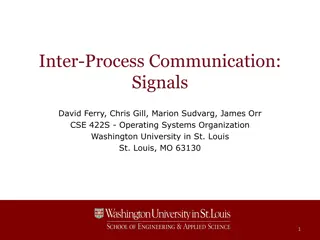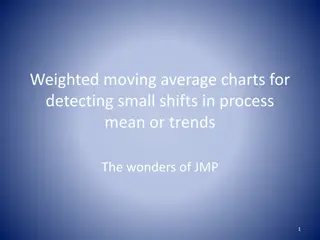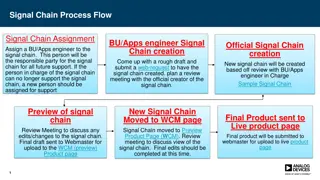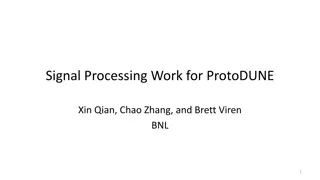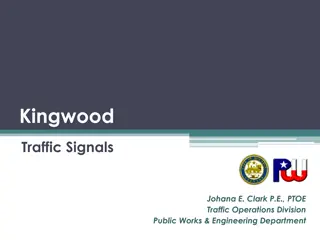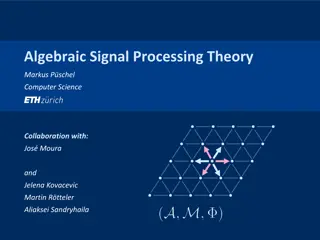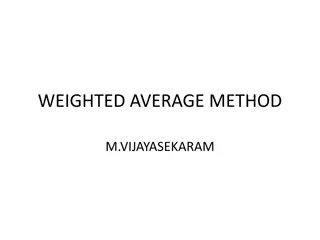Solving Moving Average and Tracking Signal Problems
Compute Mean Absolute Deviation (MAD) and Tracking Signal (TS) for forecasted and actual data, understand reasonable values for UCL and LCL in tracking signals, and explore the normal distribution of forecast errors. Learn how to calculate MAD in periods 10 and 11, analyze TS for period 11, and determine UCL and LCL values based on sample size. Dive into advanced topics in forecasting techniques and problem-solving strategies.
Download Presentation

Please find below an Image/Link to download the presentation.
The content on the website is provided AS IS for your information and personal use only. It may not be sold, licensed, or shared on other websites without obtaining consent from the author.If you encounter any issues during the download, it is possible that the publisher has removed the file from their server.
You are allowed to download the files provided on this website for personal or commercial use, subject to the condition that they are used lawfully. All files are the property of their respective owners.
The content on the website is provided AS IS for your information and personal use only. It may not be sold, licensed, or shared on other websites without obtaining consent from the author.
E N D
Presentation Transcript
Moving Average, MAD, Tracking Signal Problems-Advanced
MAD from t to t+1 Actual and forecast data are available from period 1 to period 10. In period 10: MAD = 110 and TS = 2.2, Forecast for period 11 is 1210 (F11=1210) , Actual demand in Period 11 is 1100 (A11=1100). Compute MAD in period 11. First Lets look at MAD in Period 10 MAD = Sum |A-F| /n 110 = Sum |A-F| /10 Sum |A-F| = 1100 Sum |A-F| from period 1 to 10 = 1100 In period 11, A-F = 1100 -1210 = -110 Sum |A-F| from period 1 to 11 = 1100 + 110 = 1210 MAD in period 11 = Sum |A-F| /11 MAD in period 11 = 1210/11 = 110 Moving Average Problems. A. Asef-Vaziri. 2
TS from t to t+1 Actual and forecast data are available from period 1 to period 10. In period 10: MAD = 110 and TS = 2.2, Forecast for period 11 is 1210 (F11=1210) , Actual demand in Period 11 is 1100 (A11=1100). MAD in Period 11 = 110. Compute TS in period 11. First Lets look at TS in Period 10 TS = Sum(A-F)/MAD 2.2 = Sum(A-F)/110 Sum (A-F) from period 1 to 10 = 242 (A-F) in period 11 = 1100-1210 = -110 Sum (A-F) from period 1 to 11 = 242 -110 = 132 TS = Sum(A-F)/MAD Sum(A-F) in Period 11 = 132 MAD in Period 11 = 110 TS in Period 11 = 132/110 = 1.2 Moving Average Problems. A. Asef-Vaziri. 3
LCL & UCL For TS are Not -4 & 4 What are the reasonable values for UCL and LCL in Tracking Signal? At is Actual and Ft is forecast of a random variable such as demand. Forecast error (A random Variable) Et =At-Ft has mean of 0. MAD provides an estimate for the standard deviation of Et. StdDev (Et) = 1.25 MAD. See for example http://www.estepsoftware.com/papers/madrsquare.pdf Et = = Normal (0,1.25MAD) If x = Normal( , ) Sum (x) = Normal( , N ) StdDev [Sum(Et)] = N StdDev (Et) Moving Average Problems. A. Asef-Vaziri. 4
LCL & UCL For TS are Not -4 & 4 Et = Normal (0,1.25MAD) Sum (Et) = Normal (0, N 1.25MAD) 3 ( Et -0)/( N 1.25 MAD) -3. + 3 n 1.25 ( Et -0)/MAD - 3 N 1.25. + 3.75 N ( Et -0)/MAD - 3.75 N. Tracking Signal TS= Et/MAD with samples of size N is distributed normally around 0 with UCL = 3.75 N and LCL =-3.75 N Moving Average Problems. A. Asef-Vaziri. 5
LCL & UCL For TS are Not -4 & 4 Et = Normal (0,1.25MAD) Sum (Et) = Normal (0, N 1.25MAD) 3 ( Et -0)/ N 1.25 MAD -3. + 3 n 1.25 ( Et -0)/MAD - 3 N 1.25. + 3.75 N ( Et -0)/MAD - 3.75 N. Tracking Signal TS= Et/MAD with samples of size N is distributed normally around 0 with UCL = 3.75 N and LCL =-3.75 N Moving Average Problems. A. Asef-Vaziri. 6



